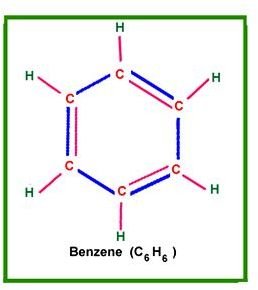Environmental Impact of Aliphatic Solvents versus Aromatic Solvents
Solvents are used worldwide and in a lot of applications, such as paints, cosmetics, pharmaceuticals, household and industrial cleaners and inks. Although they provide efficient solutions for many daily situations, important drawbacks are related to the use of products that include solvents in their composition. One of the problems is that these chemicals contribute to air pollution. The solvents are commonly known as volatile organic compounds, which can take part in chemical reactions that lead to ozone formation.
Solvents can be classified in two major groups: water-based (aqueous) solvents and hydrocarbon-based (organic) solvents. The properties of organic solvents are influenced by factors such as the number of carbon atoms in the chain and the presence of single, double, or triple bonds between adjacent carbon atoms.
There are lots of studies that correlate relatively low-level exposure to organic solvents and solvent mixtures and neuropsychiatric diseases. Solvents such as carbon disulfide and toluene have been proved to be neurotoxic, which means that they can cause neuropsychological changes (anxiety, irritability and forgetfulness) when repeatedly inhaled. Aromatic compounds, especially the polycyclic aromatic hydrocarbons, present intermediate biodegradability since they are not so resistant to biological degradation. However, these compounds are of major concern due to their toxicity and tendency to bioaccumulate.
Aliphatic Solvents
Aliphatic solvents include mineral oil and aliphatic petroleum hydrocarbons, which are complex mixtures of long-chain paraffinic compounds. These solvents have many applications such as insecticides, fungicides, herbicides and applications in aquatic areas as mosquito larvicide. They are claimed to have a low degree of acute toxicity and limited toxicity via the inhalation route. At the environmental point of view, these chemicals have very low solubility in water and high sorption to organic matter, what makes them exhibit very poor migration.
Aliphatic solvents have virtually no toxic effects to mammals or birds. The U.S. Environmental Protection Agency states that these mineral oils and aliphatic hydrocarbons present no major concerns for terrestrial effects. However, they present some potential adverse impacts on aquatic invertebrates. Studies on the distribution of these chemicals in the environment indicate that a large amount remains sorbed (taken into and retained) within surfaces upon which they are sprayed. Several studies indicate that the procedure of decomposition is characterized by a tendency of the aliphatic moieties, rather than aliphatic moieties, to accumulate in soils. A terrestrial risk assessment for the spray oils presented by the institution declares the absence of reports of phytotoxicity data in agricultural crops, even when high application rates are employed. Aliphatic hydrocarbons are not as toxic as aromatic compounds.
Aromatic Hydrocarbons
Aromat

ic hydrocarbons are among the most hazardous solvents. The cumulative effect of exposure to small amounts of benzene may cause chronic poisoning. Low-molecular-weight aromatic hydrocarbons in the concentrations found dissolved in groundwater are easily biodegraded.
Nonchlorinated aliphatic and aromatic hydrocarbons pass very slowly to the aqueous phase where they are metabolised by microorganisms, what decreases their bioavailability. The association of organic compounds with solid soil and sediment materials is called adsorption. One of the effects of the adsorption to the environment is to limit the biodegradation of pesticides and other organic contaminants. The higher sorption of aromatic pollutants to aromatic rather than aliphatic components of natural organic matter was suggested to occur in accordance with their higher solubility in aromatic solvents, such as benzene, versus aliphatic solvents, such as n-hexane.
References
Wiedemeier, T. et al. Natural Attenuation of Fuels and Chlorinated Solvents in the Subsurface. John Wiley & Sons, 1999.
Bardi, L. et al. Hydrocarbon degradation by a soil microbial population with β-cyclodextrin as surfactant to enhance bioavailability. Enzyme and Microbial Technology 27 (2000):709-713.
Chefetz, B., Xing, B. Relative Role of Aliphatic and Aromatic Moieties as Sorption Domains for Organic Compounds: A Review. Environ. Sci. Technol. 43.6 (2009):1680-1688.
